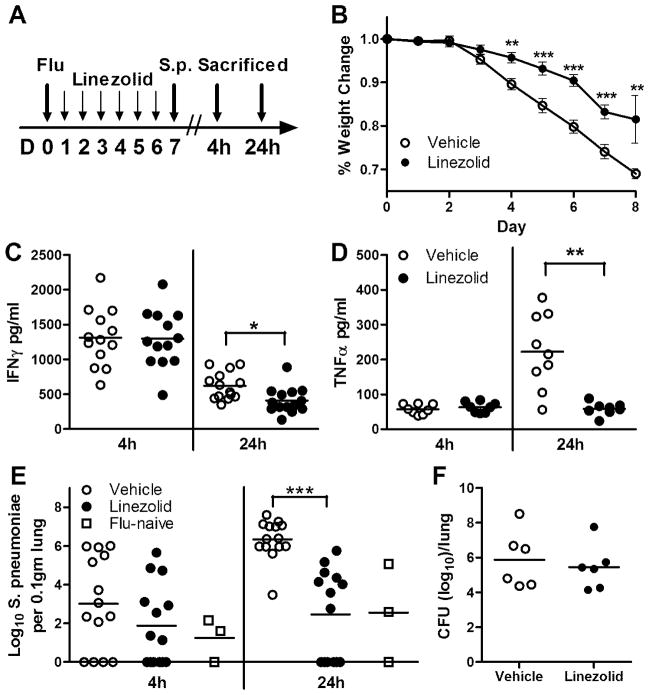FIGURE 4.
Linezolid blunts IFNγ responses and prevents outgrowth of bacteria following a post-influenza secondary bacterial infection. (A) Mice were intranasally infected (large arrow) with influenza virus and dosed twice daily with linezolid (80mg/kg) or vehicle (small arrows). At day 7, animals were intranasally challenged with S. pneumoniae A66.1 as discussed in the Methods section, and animals were sacrificed at 4h and 24h following bacterial challenge (large arrows). (B) Mean weight loss is represented as percentage of weight loss in comparison to day 0. (C and D) Bronchoalveolar lavage fluid was collected and analyzed for expression of IFNγ (C) and TNFα (D) by ELISA. (E) Lung digest samples were plated for CFU enumeration on blood agar plates and expressed per 0.1gm of lung, with the addition of a flu-naïve group for comparison. (F) To ensure that linezolid did not have a direct effect on bacterial growth, mice were left influenza-naïve, dosed with linezolid or vehicle twice daily, and infected with S. pneumoniae. Bacterial enumeration was performed at 24h post-infection and expressed per lung. Mean values for each group, denoted by horizontal lines (each point representative of one animal), were compared using t tests or one-way ANOVA along with the Student Newman-Keuls post hoc test where appropriate. Data are a compilation of two independent experiments. *p<0.05, **p<0.01, ***p<0.0001

